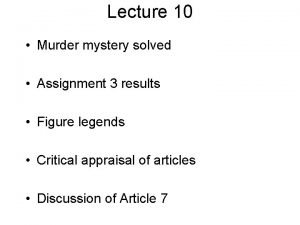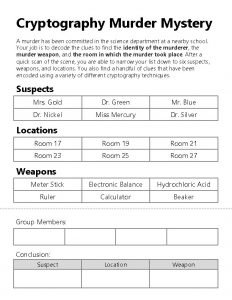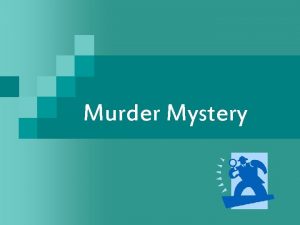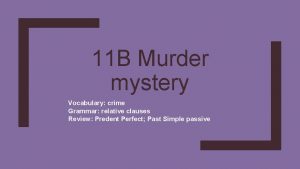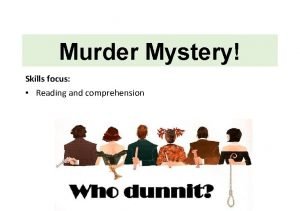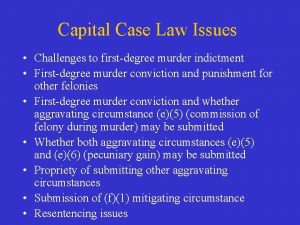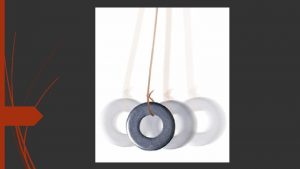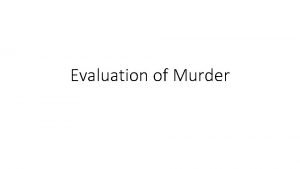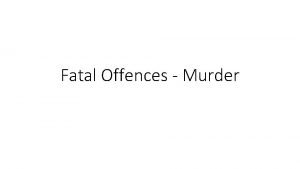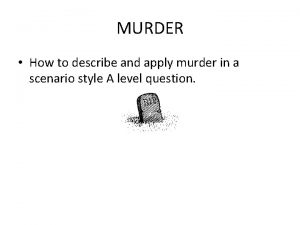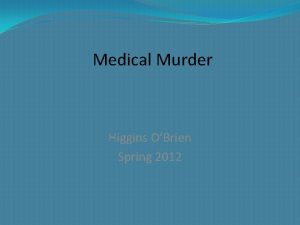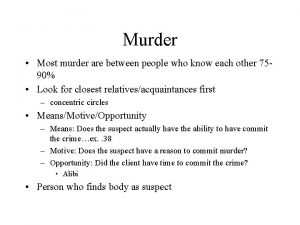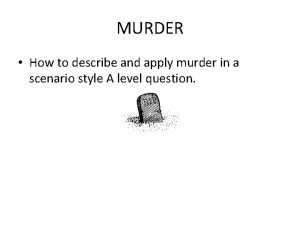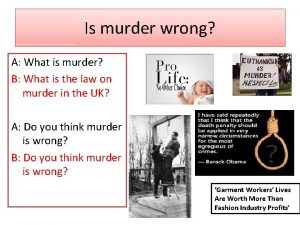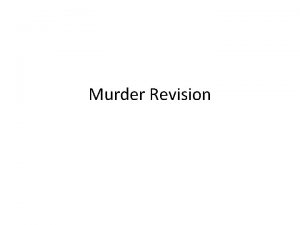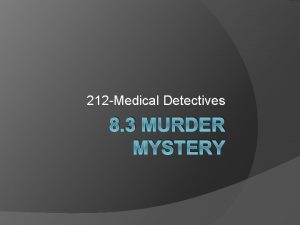Lecture 10 Murder mystery solved Assignment 3 results






















- Slides: 22

Lecture 10 • Murder mystery solved • Assignment 3 results • Figure legends • Critical appraisal of articles • Discussion of Article 7

Mouse murder mystery • Who do you think it is and why?


Figure legends • They always have a title (Can you spot the title in the following examples? ). • They concisely (opposite of wordy) describe what is in the figure. • What the symbols mean. • What the figure is of. • What is there. • You should be able to just read the legend and know what is there.

Example Figure 1

Example legend 1

Exercise 1 • Does this legend match up to the criteria for a good legend.



Exercise 2 • Underline the title. • Circle all components of the figure that are referred to in the figure legend. • How could the legend be improved?

Reading papers • No guaranteed way of approaching a paper. • After years of reading papers, I usually look at the figures first if the title and abstract pique my interest. • I am always more interested in the data than what the authors have to say about their data.

Reading the unfamiliar • I usually look at the title and abstract first. • Second, I will look at the figures to see if I can figure out what they will be talking about. Does the data talk to me? • If the figures are beyond me then I start reading the introduction, results and discussion. I note the questions I have.

Questions of the unfamiliar • Why are they doing this study? You may find the answer in the abstract, introduction or discussion. • What are they doing? Results and materials and methods. I generally do not read the materials and methods unless it is a method that is unfamiliar or to be sure how they did something.

Questions of the unfamiliar • A common mistake made by students: If you do not know the meaning of a word look it up. The context of the word in a scientific paper is usually not helpful and can be misleading.

Once I have a line on the paper. • I will start to gather references to expand my background on the area and methods: like what is a MALDI-TOF- MS. Oh, so that is why they are studying this (an epiphany). • Reread the paper in the light of this new knowledge to try to refine my understanding of the paper and answer the remaining questions on the paper.

Once I have a line on the paper. • When I reread the paper I link every statement in the results section with the data presented. I am asking the question can they make that assertion or conclusion--does the data back up what they say. I look carefully at the data.

Discussion of Article 7





 Murder mystery assignment
Murder mystery assignment Cryptography murder mystery
Cryptography murder mystery Cryptography murder mystery answers
Cryptography murder mystery answers Predent perfect
Predent perfect Murder mystery
Murder mystery Murder mystery inference activity
Murder mystery inference activity Murder mystery reading comprehension
Murder mystery reading comprehension Pasta, passion and pistols who did it
Pasta, passion and pistols who did it Number restoration
Number restoration 01:640:244 lecture notes - lecture 15: plat, idah, farad
01:640:244 lecture notes - lecture 15: plat, idah, farad Nettles poem questions and answers
Nettles poem questions and answers The guilty vicarage
The guilty vicarage Silvia lugo murder
Silvia lugo murder The murder of emmitt till date
The murder of emmitt till date Firstdegree murder
Firstdegree murder The scourged back
The scourged back Zechariah stevenson sentenced
Zechariah stevenson sentenced Macbeth dagger soliloquy literary devices
Macbeth dagger soliloquy literary devices The lunchroom murder
The lunchroom murder Murder on the orient express vocabulary
Murder on the orient express vocabulary Murder of dentist in blairsville pa
Murder of dentist in blairsville pa Murder on the orient express analysis
Murder on the orient express analysis Steven benson murder
Steven benson murder
